Level IV Study Page
This
online lesson program is not intended to be a substitute for riding lessons,
instead is is intended to be a thorough introduction for non-riders and a
valuable educational tool to riders. Horses can be unpredictable at times
and can cause harm to inexperienced handlers, please seek a professional
instructor or trainer when applying your knowledge learned during this online
lesson program.
1. The
footfall pattern of gaits
Walk
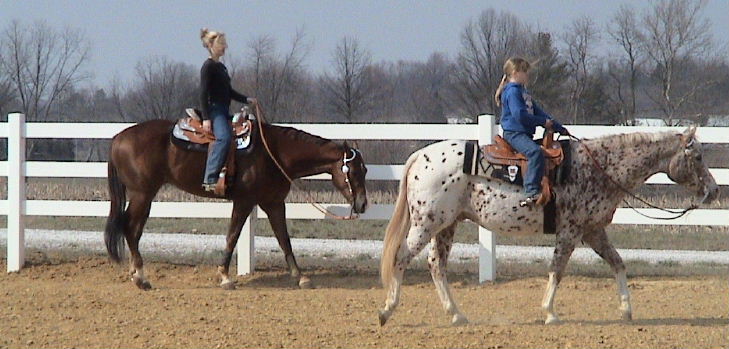
hind foot, front foot (same side), hind foot, front foot (same side)
Example: if the horse starts with right hind foot the next
foot is the right front foot, next it left hind foot then left front
foot
Jog/trot
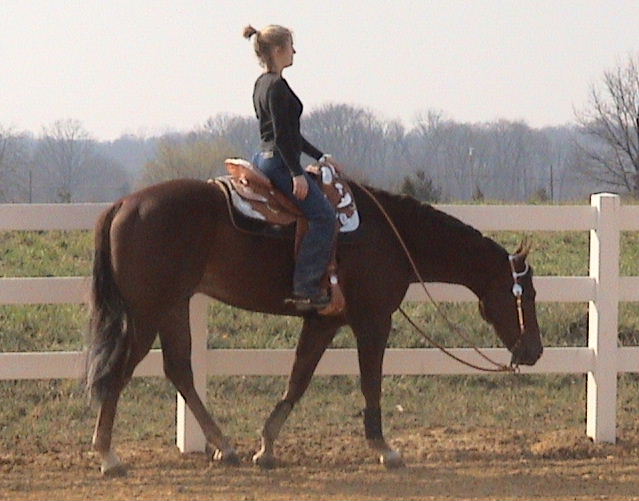
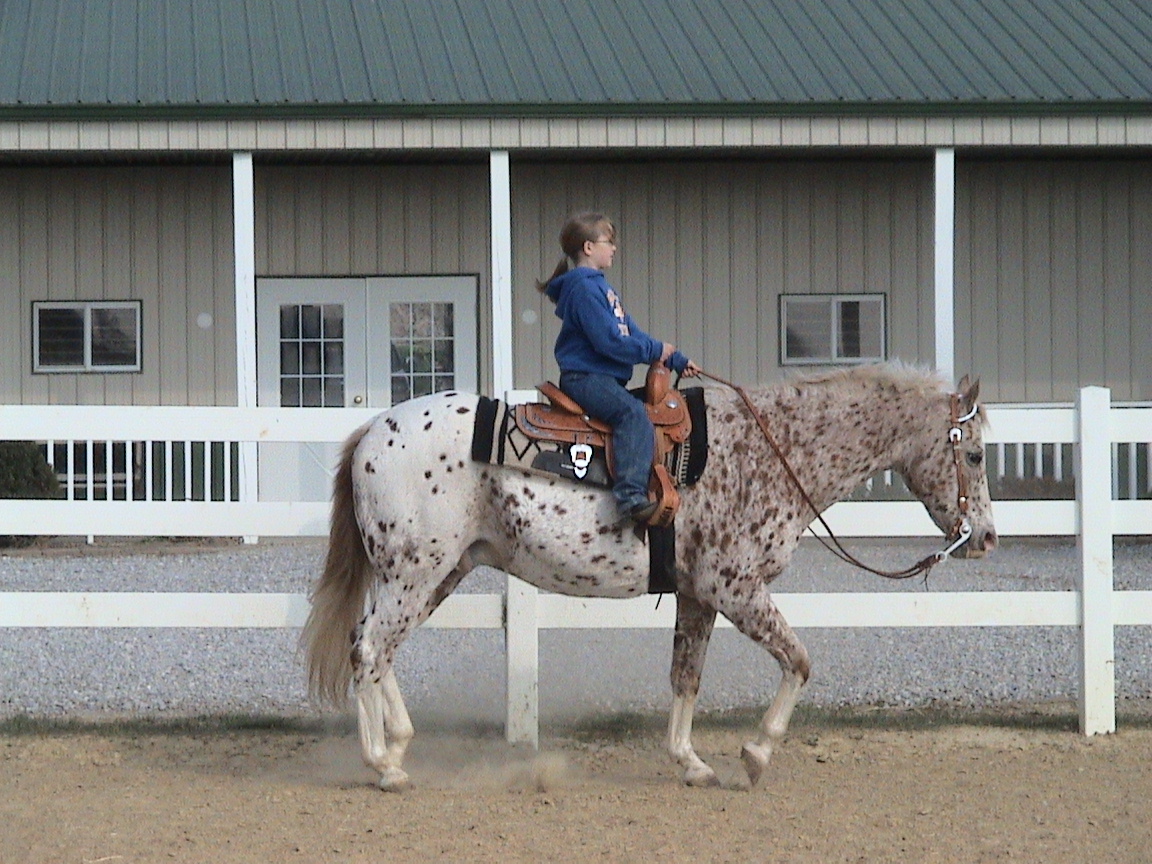
the diagonal pairs of legs
together
Example: if the horse starts
out with left hind and right front, the next beat is the right hind
and left front
The difference between jog and
trot is stride length and speed. The jog is a western gait
that should be slow and collected allowing the rider to comfortably
remain seated in the saddle. The trot used in hunt seat should
show forward motion with a longer stride and medium speed, the rider
will post at this gait (rise and sit in rhythm with the horse).
Additional variations: Extended
jog (western) is a noticeable lengthening in stride with a slight
increase in speed. Collected or sitting trot (hunt seat) is
similar to the jog in western with slightly more forward motion,
rider sits at this gait. Extended trot (hunt seat) should be a
noticeable lengthening of the stride with slight increase in speed,
rider may be required to post (hunt seat) or sit as in dressage.
Lope/canter -
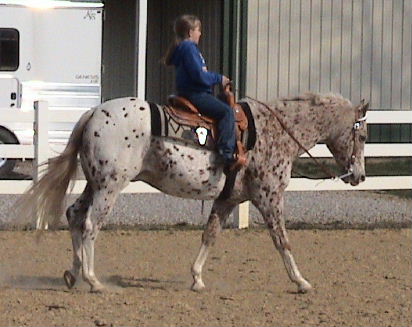
outside hind leg, diagonal pair, inside front
Example: Horse going to the
right on the right lead will start with left hind, then inside hind
and outside front legs together, then right front leg.
The difference between a lope and
a canter is stride length and speed. The lope is a western
gait that should be slow and collected. The canter used in
hunt seat should show forward motion with a longer stride and medium
speed.
Additional variations: The hand gallop (hunt seat) is a definite
lengthening in stride with an increase in speed showing control at
all times.
2. The
development of a horse breed
American Quarter Horse
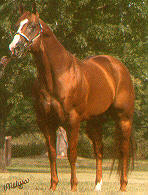
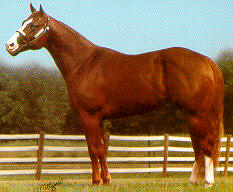
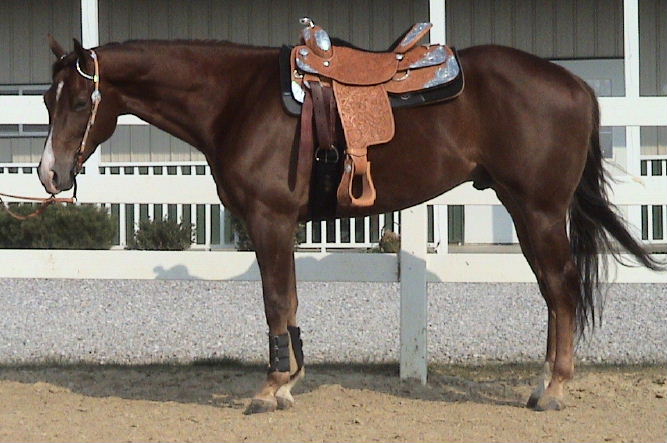 These heavily muscled, compact horses could
run a short distance over a straightaway faster than any other horse, and
the fastest were called Celebrated American Quarter Running Horses
by English colonists in the 1600s. In 1940 a registry was formed to
preserve the breed which officially became the American Quarter Horse.
~
www.aqha.com
1674
First quarter mile races held in the colonies
1756 Janus, a thoroughbred Stallion that
influenced the early "Quarter Horse" imported to America.
1828
Copper Bottom, Stallion owned by Sam Houston foaled
1895
Peter McCue (foundation sire) foaled
1937 Wimpy P1 was foaled
1940
Leo (foundation sire) foaled
1940 Three Bars a Thoroughbred
stallion very influential in the quarter horse was foaled
1940 Quarter Horse Association was founded
1941 First horse registered ~ Wimpy P1
1967 First Quarter Horse Congress held -
world largest single breed show
1974 First World Show held
These heavily muscled, compact horses could
run a short distance over a straightaway faster than any other horse, and
the fastest were called Celebrated American Quarter Running Horses
by English colonists in the 1600s. In 1940 a registry was formed to
preserve the breed which officially became the American Quarter Horse.
~
www.aqha.com
1674
First quarter mile races held in the colonies
1756 Janus, a thoroughbred Stallion that
influenced the early "Quarter Horse" imported to America.
1828
Copper Bottom, Stallion owned by Sam Houston foaled
1895
Peter McCue (foundation sire) foaled
1937 Wimpy P1 was foaled
1940
Leo (foundation sire) foaled
1940 Three Bars a Thoroughbred
stallion very influential in the quarter horse was foaled
1940 Quarter Horse Association was founded
1941 First horse registered ~ Wimpy P1
1967 First Quarter Horse Congress held -
world largest single breed show
1974 First World Show held
3.
Correct
method of bridling horse.
Stand on the horse's near side
(left) even with the throatlatch. Horse should have halter on
and either be tied or held by a helper. Unfasten halter and
let nose piece slide down horse's nose. Then re-fasten halter
around horse's neck. Hold bridle by the crownpiece in left
hand and have reins loosely draped over your right shoulder.
Be sure not to allow the reins to drag on the ground as you or the
horse my become entangled. Place your right hand flat under
the bit with tips of fingers
pointing away from horse. Bring bridle up to horse sliding
crownpiece over ears and slipping bit into horse's mouth. This
does take some practice! Some horses may require encouragement to open
up for the bit. Simply insert your thumb into the corner of their
mouth. Fasten throatlatch loosely, you should be able to slip a
fist snugly under it. Fasten cavesson (hunt seat) snugly around
nose. You should be able to slip two fingers snugly underneath
cavesson.
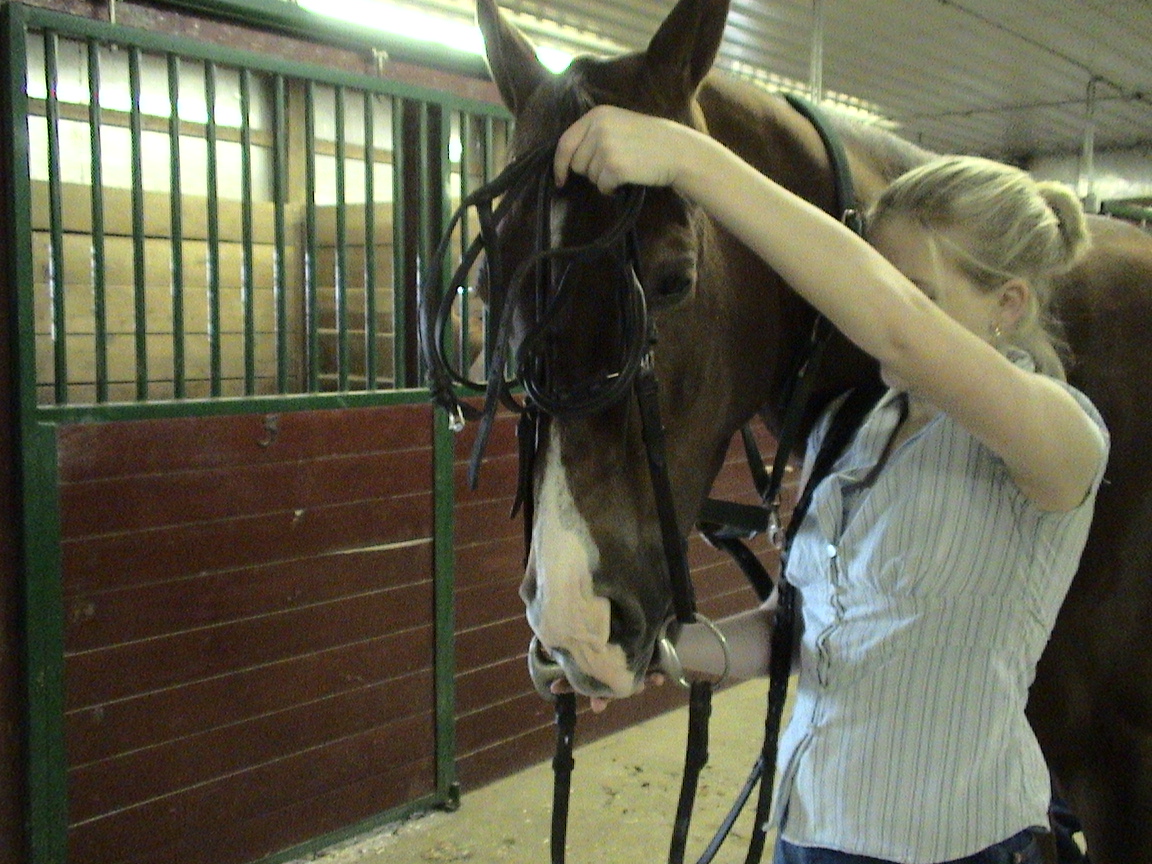
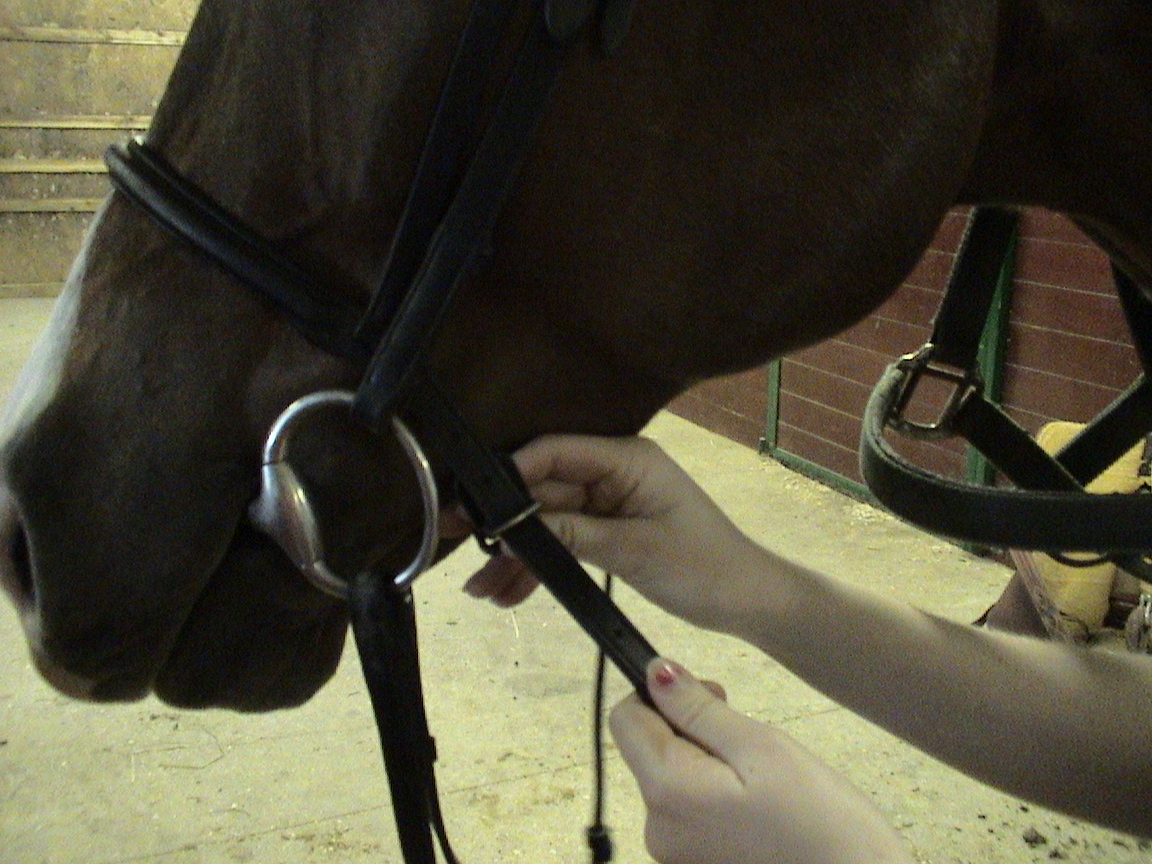 Bridling a hunt seat horse
tightening the cavesson
Bridling a hunt seat horse
tightening the cavesson
4.
5 common western bits
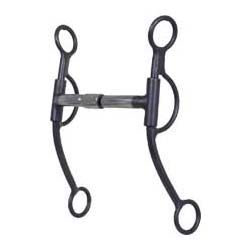
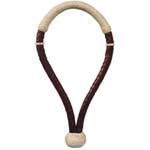
Billy Allen Bosal
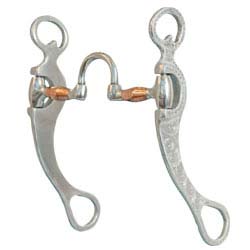
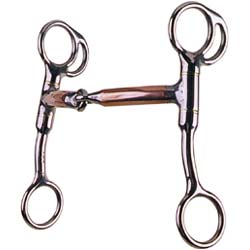
Correction bit
Tom Thumb
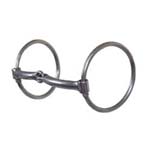
Loose ring
snaffle
5.
5 common hunt seat bits
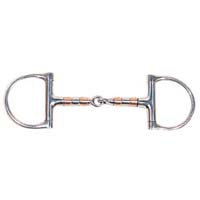 Dee-ring
cooper roller snaffle
Dee-ring
cooper roller snaffle
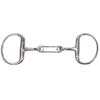 Egg-butt
Dr Bristol snaffle
Egg-butt
Dr Bristol snaffle
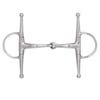 Full
cheek snaffle
Full
cheek snaffle
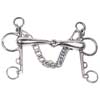 jointed Pelham
jointed Pelham
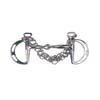 Kimberwicke
Kimberwicke
6. Give three examples of horse
related careers and education needed for each.
horse trainer ~ years of riding experience,
Universities and colleges offer courses
equine vet ~ DVM degree
riding instructor -
years of riding experience, Universities
and colleges offer courses
administration at breed
association ~ training in field and/or college degree
writer for equine
publication - College degree and experience
horse farm manager - Degree in farm
management
breeding manager - Degree in reproductive
science
There are hundreds of horse related
careers, feel free to surf the net and find more horse related careers.
Click HERE to take Level IV test
Click HERE to go back
to Online Lesson Program page








 Bridling a hunt seat horse
tightening the cavesson
Bridling a hunt seat horse
tightening the cavesson









